Market St, Denton
The sculpture, Broken Sword, is by Paul Margetts of Forging Ahead and it was unveiled in 1995.
It consists of an outer pyramidal frame containing poppies growing upwards into a sword that surmounts the frame. The tip of the sword is broken off and placed across the blade to form a cross.
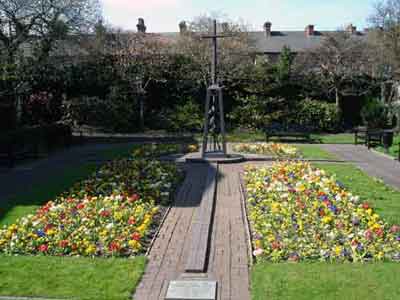 |
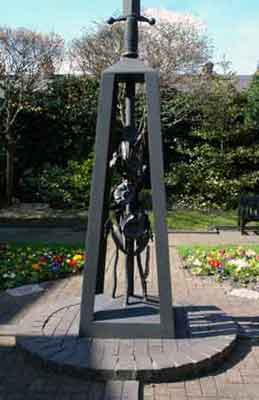 |
| Garden of Remembrance with the sculpture of the Broken Sword in the background. | The Broken Sword. |
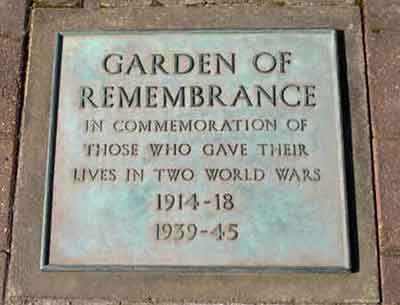 |
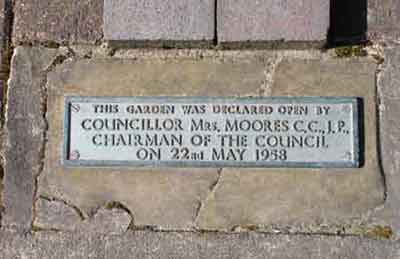 |
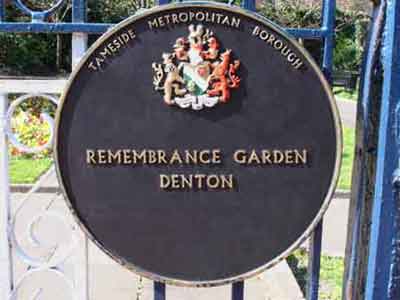 |
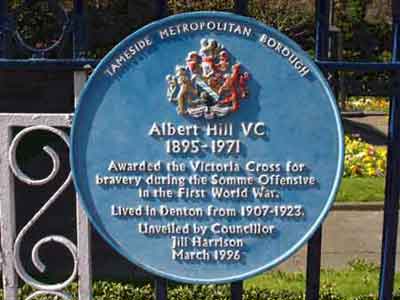 |
15280 Private Albert Hill VC
Albert Hill (24 May 1895-17 Feb 1971) was born in Hulme, Manchester, and he was one of ten children.
His family first moved to Peacock St (off Ashton Rd), Denton, and later they moved to 45 High St (bottom of Osborne Rd off Hyde Rd).
On leaving school he began work at Alpha Mill, Manchester Rd, before becoming an apprentice planker at the hat factory of Joseph Wilson & Sons Ltd on Wilton St.
After enlisting in the army, he joined “C” Company of the 10th (Service) Battalion, Royal Welch Fusiliers. He first entered the theatre of war on the Western Front on the 27 Sep 1915 and he was demobilised on the 16 Feb 1919. He was awarded the Victoria Cross for his gallantry at Delville Wood on the 20 Jul 1916 during the Battle of the Somme (1 Jul 1916-18 Nov 1916).
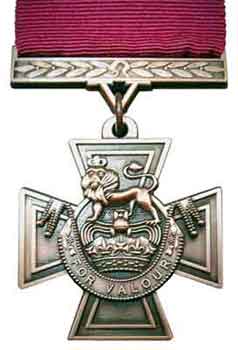
Citation
15280 Private Albert HillRoyal Welch Fusiliers
For most conspicuous bravery
When his battalion had deployed under very heavy fire for an attack on the enemy in a wood, he dashed forward, when the order to charge was given, and, meeting two of the enemy suddenly, bayonetted them both. He was sent later by his Platoon Serjeant to get into touch with the Company, and, finding himself cut off and almost surrounded by some twenty of the enemy, attacked them with bombs, killing and wounding many and scattering the remainder. He then joined a Serjeant of his Company and helped him to fight the way back to the lines.
When he got back, hearing that his Company Officer and a scout were lying out wounded, he went out and assisted to bring in the wounded officer, two other men bringing in the scout.
Finally, he himself captured and brought in as prisoners two of the enemy. His conduct throughout was magnificent.
He was also awarded the French Croix de Guerre by President Raymond Poincaré and the Russian Order of St George (1st Class) for his bravery. In addition, he received three campaign medals. He returned to Denton on 12 Oct 1916 as a hero. On the 29 Oct 1916 he was presented with the Victoria Cross by King George V at Buckingham Palace and on the 25 Nov 1916 he was accorded another hero's welcome to Denton, accompanied by Brigadier General Kentish DSO. He was met at Denton Railway Station by a procession that escorted him through the principal streets and a company of the Royal Welch Fusiliers formed a guard of honour. In Denton Market Place a platform had been erected where speeches were made. Here, Albert Hill was presented with a gold hunter watch and a framed photo of himself by the Chairman of the Council. The Chairman also presented a gold watch to Company Quartermaster Serjeant George Downs DCM for his gallantry near Ypres in Nov 1914.
Albert Hill’s Russian Order of St George was awarded to him by General Campbell at a ceremony in Manchester in 1917.
In Feb 1919 Albert Hill returned to work at Wilson's hat factory and in 1920 he married Doris Wilson at St George's Church, Hyde. In 1923 they emigrated to the USA where he found work as a building labourer. The couple had three daughters and a son. At the outbreak of World War II he attempted to enlist but he was advised to do war work instead. He made a brief return to England in 1956 for the Victoria Cross Centenary Celebrations. He died at Pawtucket, Rhode Island, in 1971 and he was buried with full military honours in Highland Memorial Park, Johnston, Rhode Island. His Victoria Cross is in the museum of the Royal Welch Fusiliers in Caernarfon Castle, Gwynedd, North Wales.
